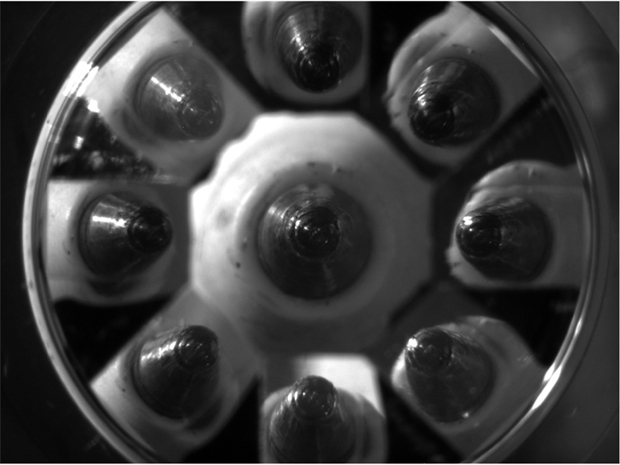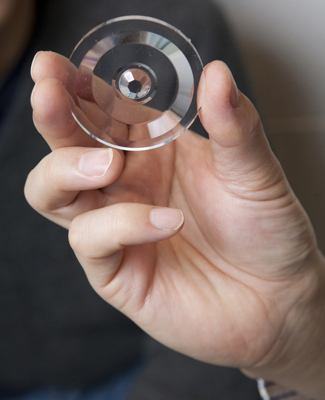Single Lens Creates Microscopic 3D Images
At Ohio State University, engineers have designed a new lens that allows microscopic objects to be viewed from nine different angles at once, creating a 3D image. There are 3D microscopes now, but they use multiple lenses or cameras to move around an object. The researchers at Ohio State claim that this new lens is the "first single, stationary lens to create microscopic 3D images by itself." The lens looks a bit like a diamond, and is about the size of a fingernail. But unlike a diamond, its facets are slightly different sizes and different angles.
The lens is made from the thermoplastic material polymethyl methacrylate, sometimes called "acrylic glass". The prototype lens was manufactured using a precision cutting machine, but the engineers said that it could be made much more cheaply using traditional molding techniques.
Researchers Allen Yi and Lei Li created the lens. Li first wrote a computer program to design the lens so that it could be used to image microscopic objects. Yi and Li then used a milling tool with a diamond blade to cut the shape from the thermoplastic material, shaving bits of plastic in increments of 10nm.
They installed the lens on a microscope with a camera looking down through the facets, and placed objects under the flat side. Each facet captured an image of the object from a different angle, and the images were combined on a computer to create a 3D image. The engineers recorded 3D images of the tip of a ballpoint pen (1mm), and a mini drill bit (0.2mm).
These lenses could be used in manufacturing microelectronics and medical devices, which now requires very complex machinery to view the tiny components as they are assembled. Li also sees an application for the medical testing industry, which is attempting to shrink devices that analyse fluid samples. Cutting tiny reservoirs and channels in plastic requires a clear view, and the depths must be carved with precision.
Li said, "For us, the most attractive part of this project is that we will be able to see the real shape of micro-samples instead of just a 2D projection."
[via The Engineer]


